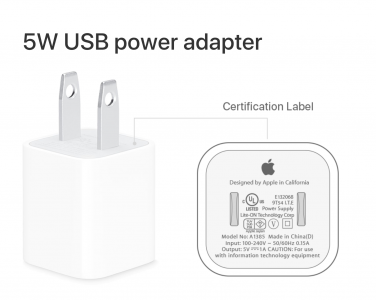sud98
Well-Known Member
One of the FM's had bought specialized fast switching circuit breakers that he had installed to prevent overload to hit any of the devices. He had imported it from UK, do those kind of devices help?
Found this explanation good for beginners with no electrical knowhowFolks, I've gone through many threads and information on power management. There are varied thoughts and solutions. I've personally used a simple UPS and also an isolation transformer. There are pros and cons of different approaches. So, I find it a bit confusing.
What are the main points one should consider before making a decision? From what I understand, one of the main issues is power surges and voltage fluctuations. Anything else that could harm the equipment? Also, there is EMI/RF noise that could be filtered out. (I've personally drawn a dedicated power line/phase for the audio system).
I'm considering a different/ better solution and Rontek Aviron LX or HTB sounds good. What are your thoughts on this device or similar ones. Any other recommendations?
(For me fan noise is a deal breaker)

 pennyelectric.com
pennyelectric.com

None of these help when you have consistently high voltage coming from the power distribution company. I have RCCB from Schneider Electric for all rooms. Ever since the lockdown the voltages being supplied here at Pune has been consistently hovering around 250 volts. Most equipment are designed for around 100-240 volts. I have lost apple phone charger, two computer SMPS have gone burst. My water purifier SMPS fried. My Yamaha AVR SMPS got fried. My Allo shanti power supply fuse blew off. Each time it has been the SMPS and all of this has happened after the lockdown. Before the lockdown the voltage never used to go above 230 v. Maintaining 230 v requires better power equipment. I believe India has diluted the regulation requirements for economic reasons / allow certain private players to install lesser costing equipments for power generation. https://www.hifivision.com/threads/...ower-equipment-for-ht-setup.87835/post-987314One of my friends who work for Honeywell and consults for commercial projects (electric) told me that having RCCB (Residual Current Circuit Breaker and a proper SPD (Surge Protection Devise) between Mains and Meter is the first and important start towards protecting your equipment and also the personal safety.
Do we have any FMs here who have this in place and still had equipment breakdown despite of this protection?

I was thinking about installing main line voltage stabilizer https://www.vguard.in/product-details/vgmw-1000-plus-mainline-stabilizersSince then I have installed voltage stabilizers in all rooms
They are good. Many in my apartment complex have installed these after the lockdown spate of blowing television sets and kitchen equipments. I took a different route in having stablizers installed in every room. Only my hot water geysers are not on stabilizers. Rest all, including AC, dishwasher, washing machine, clothes dryer, micowave oven, electric oven, fridge, audio equipments computers, etc are on automatic voltage stabilzers.I was thinking about installing main line voltage stabilizer https://www.vguard.in/product-details/vgmw-1000-plus-mainline-stabilizers
Any idea how good they are ?
OMG!!!One of my friends who work for Honeywell and consults for commercial projects (electric) told me that having RCCB (Residual Current Circuit Breaker and a proper SPD (Surge Protection Devise) between Mains and Meter is the first and important start towards protecting your equipment and also the personal safety.
Do we have any FMs here who have this in place and still had equipment breakdown despite of this protection?
One of the FM's had bought specialized fast switching circuit breakers that he had installed to prevent overload to hit any of the devices. He had imported it from UK, do those kind of devices help?
None of these help when you have consistently high voltage coming from the power distribution company. I have RCCB from Schneider Electric for all rooms. Ever since the lockdown the voltages being supplied here at Pune has been consistently hovering around 250 volts. Most equipment are designed for around 100-240 volts.
The trafo is inside the complex.Indian standard is 240V and +/- 6% regulation or 225.4V to 254.4V. This is normally at the service point. 6V above nominal shouldn't fry anything
If you have 250V at your sockets then at the transformer it is set high to cater for any voltage sag at the far end. And your apartment may be close to the trafo?
These trafos have off load tap changers that don't act automatically. The tap may be set high so as to have nominal voltage at the load farthest from it rather to cover the voltage drop at that end. You may be close it so you have near no-load voltage with not much drop in the cable?The trafo is inside the complex.
I should have added "electrically close to the trafo".These trafos have off load tap changers that don't act automatically. The tap may be set high so as to have nominal voltage at the load farthest from it rather to cover the voltage drop at that end. You may be close it so you have near no-load voltage with not much drop in the cable?
According to the company the time to cutoff is user settable - lowest setting is 0.1 seconds.
Against a surge of what origin? For power surges from the grid, possibly good enough. For a direct lightning flash, nothing will protect except physically unplugging the equipment. For a side flash, maybe. But there's no absolute guarantee and I wouldn't bet on it - there are too many variables.
Surges are classified into two - a Switching Impulse from the network that has a rise time of 250 microseconds and a tail of 2500 microseconds. These are important above 220kV.Lighting is faster and more powerful
My Krykard (servo) did not help protecting my equipment, had it installed dedicated to on HT equipmentThey are good. Many in my apartment complex have installed these after the lockdown spate of blowing television sets and kitchen equipments. I took a different route in having stablizers installed in every room. Only my hot water geysers are not on stabilizers. Rest all, including AC, dishwasher, washing machine, clothes dryer, micowave oven, electric oven, fridge, audio equipments computers, etc are on automatic voltage stabilzers.
servo stabilizers are slow. They depend on a motor to move an arm. In many cases they may not be enough to save delicate electronic items. For fast voltage corrections one must use static voltage stabilizersMy Krykard (servo) did not help protecting my equipment, had it installed dedicated to on HT equipment

I wish I had known this earlierservo stabilizers are slow. They depend on a motor to move an arm. In many cases they may not be enough to save delicate electronic items. For fast voltage corrections one must use static voltage stabilizers
Energy Saving Motor | Energy Savers India Bangalore
ES Electronics (India) Pvt ltd offers energy conservation products since the year 1990. The company has more than 800 installation in India, Africa, America, Gulf, Europe & Foreign station companies.The Products manufactured by ES Electronics has been Tested and Certified by Central Power...www.energysaversindia.com

Differences Between Servo Stabilizer and Static Stabilizer | Servomax Limited Blog
Stabilizers – the ideal electrical devices for voltage conditioning – have become mandatory in numerous applications. The Voltage rises and dips often appear frequently or occasionally – they can be ewww.servomax.in
This was discussed earlierI wish I had known this earlier
We need a Master Thread on this Topic to tried and tested solution for the power issues.
Forum has multiple confusing threads and FMs like myself who have zero electrical knowledge gets carried away by solutions which may not work in most of situation.
I think this will be at the cost of harmonics. For video this shouldn't matter. But if someone has excellent ears the harmonics may not give the best audio quality.Do you think Online UPS (double conversion) is answer to most of the common power problems?

